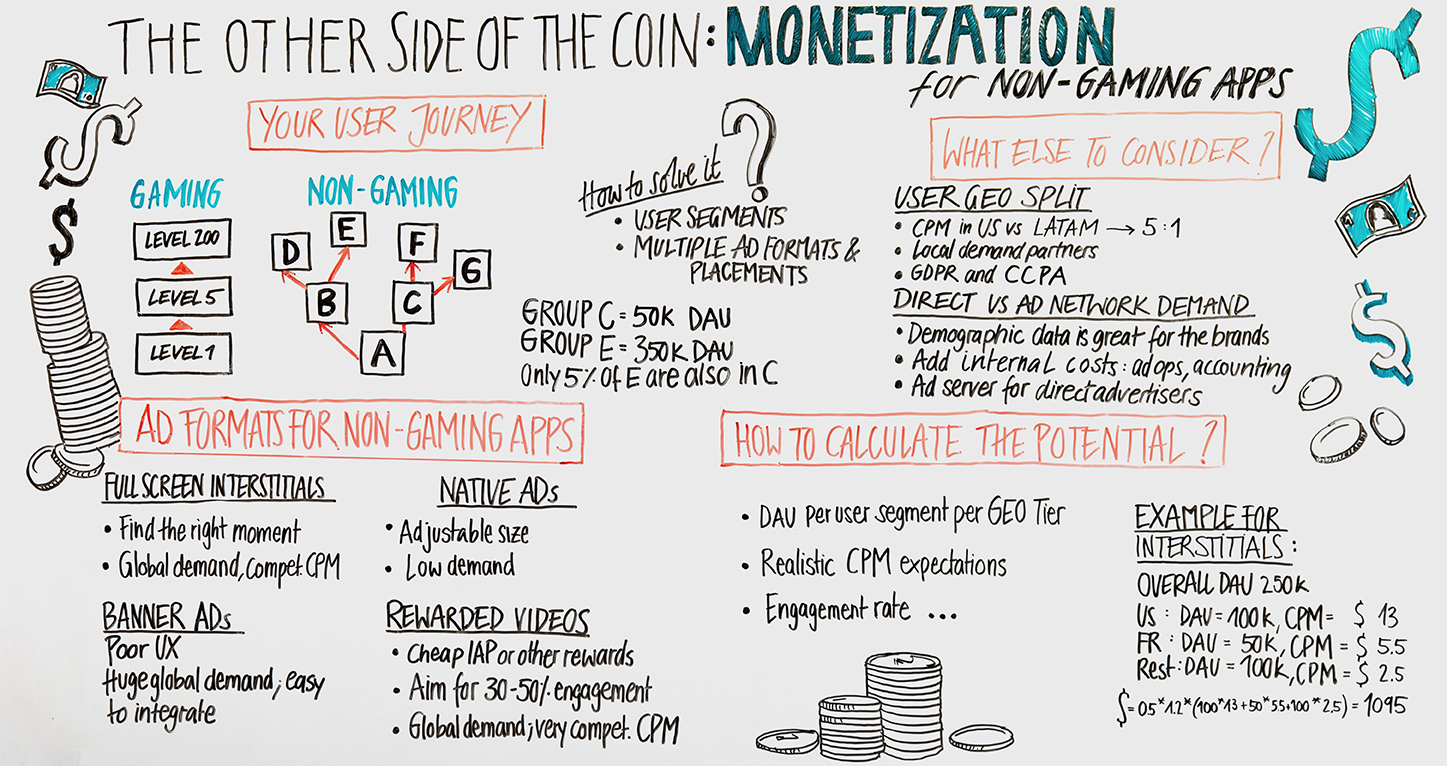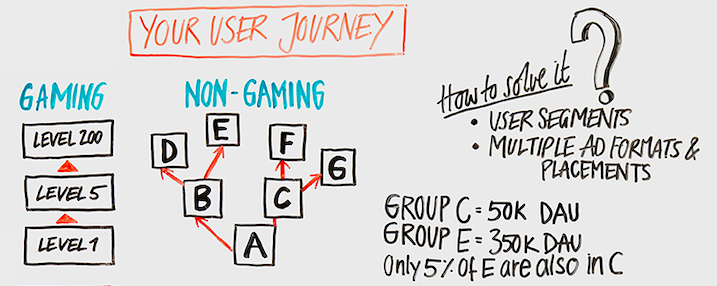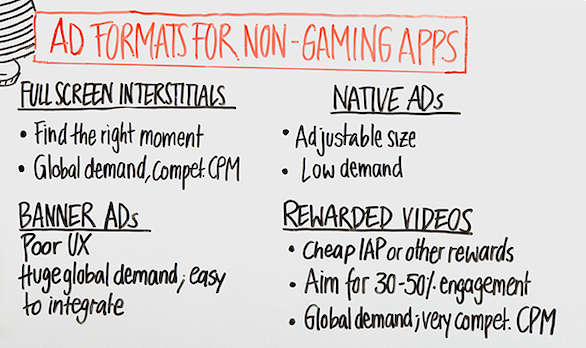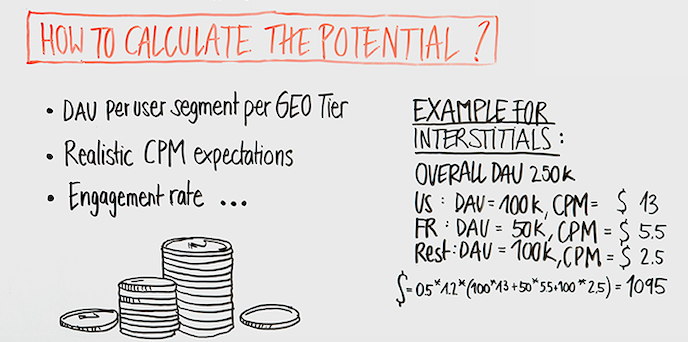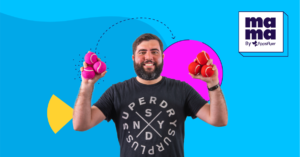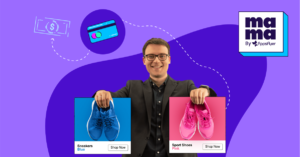
The other side of the coin: Monetization for non-gaming apps
Welcome to Edition 33 of MAMA Boards, an AppsFlyer video project featuring leading mobile marketing experts on camera. For today’s mini whiteboard master class, we have Inga Teiserskyte, Product Manager at Onefootball, a football media company covering over 100 international football leagues and competitions.
Many marketers are already familiar with successful ad monetization in the Gaming vertical, but what about for the others? Inga walks us through this non-linear process, and how we can leverage audience segmentation and diverse ad formats, among other tools, to make a profit. Let the money flow!
Real experts, real growth. That’s our motto.
Enjoy!
Transcription
Hello and welcome to the new edition of MAMA Boards by AppsFlyer. My name is Inga and I’m from Onefootball, which is a platform about all things football. Mobile advertising has often been analyzed from the gaming perspective; however, today I want to share how Non-Gaming apps can benefit from serving advertising.
How does a Gaming app user journey differ from a Non-Gaming app user journey?
So let’s take a look at the user journey. While Gaming apps usually have a linear user journey that usually starts at level 1 and then continues to levels 2, 5, and 200, Non-Gaming apps usually look a little bit more like trees with all kinds of directions. This means that if you have a group C, which is 50K daily active users, and group E, which is 350K users, even though they are in the same app, they might be overlapping only by 5%.
So how do we solve this? The best way is to use user segmentation and multiple ad formats in different placements.
What should I consider when building a Non-Gaming monetization business case?
So what else to consider when building your business case?
First, geographical split for the users is really important when it comes to the CPM levels, since they can vary extremely. For example, in the US and LATAM, it can be as high as 5 to 1.
Second, if you have a huge group of users in a certain region, you can solve it by working with the local demand partners who have the expertise and relationships in the region with the media agencies. Don’t forget that user privacy acts add additional complexity into the story.
Third, additional demand can be added from working with the brands directly since Non-Gaming apps usually have really valuable demographic data. However, you have to remember that this adds additional internal costs such as ad ops and accounting, as well as a need for additional ad server capabilities.
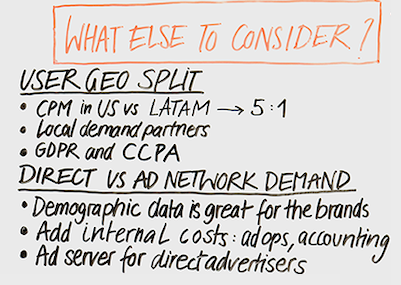
What are the best ad formats for Non-Gaming apps?
So let’s take a look into the best ad formats for Non-Gaming apps.
To start, full screen interstitials require finding the right moment in your user journey; however, they have a huge global demand and competitive CPM.
Next, banner ads might decrease your user experience. On the other hand, they’re easy to integrate and have huge global demand, especially in emerging markets where other ad formats do not have it.
Third, native ads usually look really great. You can adjust the size according to your app and content. However, they have low demand, especially in the markets where banner ads do not face this issue.
Finally, rewarded videos are often used in Gaming apps. However, Non-Gaming apps have to find either cheap in-app purchases or other rewards to use them, aiming for 30, 50 percent engagement rate. The biggest benefit are their global demand and very high CPM.
How do I calculate potential profit from monetization?
So how do we calculate all the potential and all the money you can make?
First of all, please split your daily active users into groups and segments. For example, if you have a lot of different countries and none of them are reaching 10 or 20%, just group them into the language groups. Let’s say English-speaking markets and Western European can be together.
Second, get their realistic CPM expectations from your demand sources and, best-case scenario, take a little window so you are on the right path.
Third, don’t forget the engagement rate if you are using rewarded ad format such as rewarded video. If you were expecting engagement to be between 30 and 50%, take 30, 40, and 50 percent just to be sure that it’s actually according to your expectations.
Example
Now let’s take a look at an example for the interstitials. Let’s assume your app has 250,000 daily active users: 100,000 of them are living in US; 50,000 are in France; and the rest are emerging markets in the rest of the world.
We got their CPM expectations and we calculated the potential revenue.
In the US, we are expecting to reach $13; in France, $5.5; and in the rest of the world, $2.5. This means that if we assume that 50% of other users are reaching the point where they see the interstitial and they see 1.2 of them per day, $21 would be our revenue potential from interstitials per day.
Conclusion
It’s definitely often a very complex task to bring all of these points together to find the right way to serve ads inside your app without sacrificing user experience. However, this high-margin revenue stream is definitely worth your effort.
That’s it for today. For more of MAMA Boards, please click here, and thanks for watching.
Bye.

